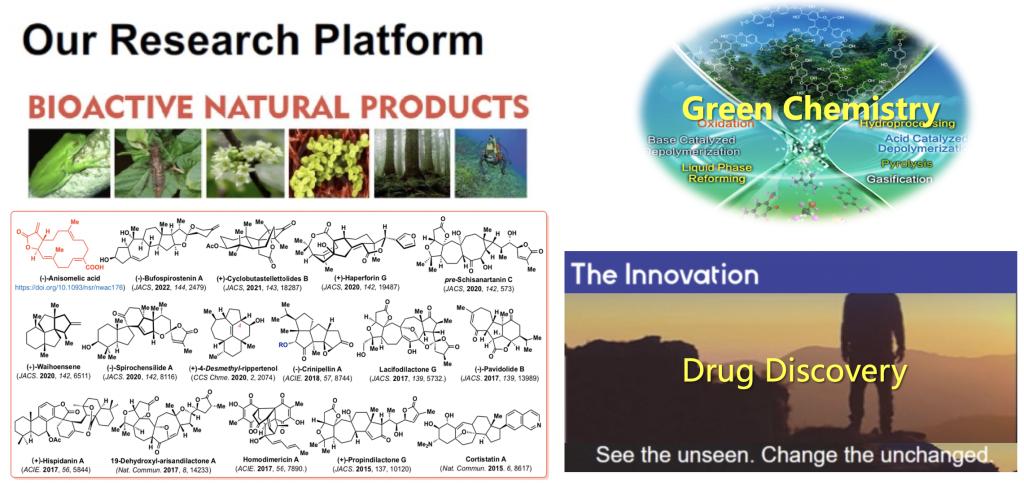
The total synthesis of natural products is a fundamental and applied research field that focuses on developing efficient methods and strategies for synthesizing bioactive natural products. This area of research plays a crucial role in discovering new functional compounds, studying the molecular functions of genomes and proteomes, and exploring the mysteries of life. Through the synthesis of bioactive natural products, numerous novel organic synthesis methods and strategies have been developed, significantly advancing industries such as pharmaceuticals and materials. These advancements contribute to the sustainable development of the national economy. Our research group specializes in the total synthesis of complex natural products with important biological activities. We are committed to developing efficient and innovative synthetic methodologies for the synthesis of bioactive natural products and small molecules. These works provide a foundation for future biomedical research and drug development. We also offer a vibrant research platform for young chemists who are passionate about organic chemistry and eager to discover and create beauty through organic synthesis.